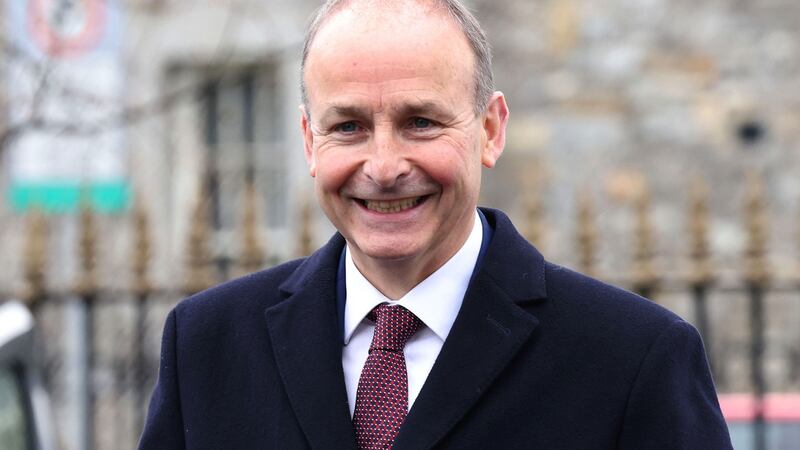The two big government parties will breathe a sigh of relief at the findings of the latest Irish Times/Ipsos poll which shows a rise in support for Fianna Fáil and Fine Gael and a drop for Sinn Féin. Although the changes are not dramatic, they mark a reversal of a potentially worrying trend for both Coalition parties.
Fianna Fáil will be happiest at the poll findings which show the party gaining three points to 23 per cent, its best result in more than two years. This represents an endorsement of its performance in office during the Covid pandemic as well as the Government’s response to the invasion of Ukraine.
Taoiseach Micheál Martin has seen a significant increase of eight points in his satisfaction rating to 51 per cent. It is the highest since he took over as party leader 11 years ago and the icing on the cake is that he is now the most popular party leader in the Dáil. The strong public approval for Martin should help to make his leadership secure for the foreseeable future and enable him to make the transition from Taoiseach to Tánaiste at the end of this year without having to worry too much about dissension in the party ranks.

The increase in support for Fine Gael – up two points to 22 per cent – and for its leader Leo Varadkar – up three to 48 per cent – should also help to ensure a smooth handover in December, assuming the Government can maintain the impetus that has enabled the two bigger parties to improve their standing with the public after a rocky period at the end of last year.
One worry for the Coalition is that its third leg, the Green Party, has dropped to three per cent and its leader Eamon Ryan has recorded his lowest satisfaction rating since becoming party leader (19 per cent). There is deep unhappiness at Ryan’s performance among Fianna Fáil and Fine Gael supporters and this has the potential to lead to serious instability in government.
The drop of two points in Sinn Féin support, and a similar fall in Mary Lou McDonald’s satisfaction rating, may give some pause for thought to those who believe that the party will inevitably lead the next government. Still, at 33 per cent, Sinn Féin remains in a strong position and is by a significant margin the most popular party.
Support for the minor parties has not changed very much over the past few months. Labour is still on four per cent, despite the change of leader, while support for Independents and Others remains at 15 per cent. Support for Solidarity/People Before Profit has halved to one per cent, possibly as a result of its stance on Ukraine.
Overall, the poll indicates a reasonable level of satisfaction with the Government as it approaches its half way point but uncertainty remains high. How it deals with the significant rise in the cost of living will be the next big challenge.











